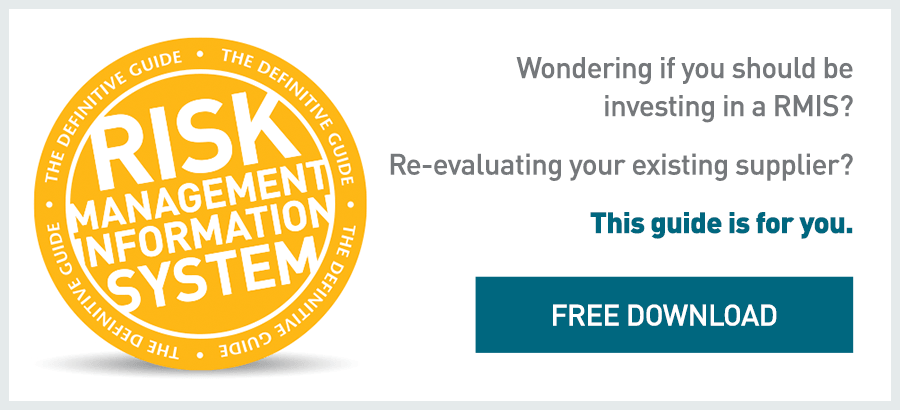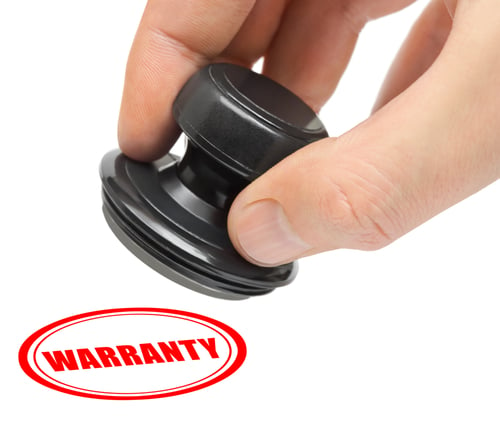 In the business world, it’s not unusual to identify trends that could benefit the clients we serve. Spotting trends, however, is usually the easy part. The challenge comes in developing products and services that empower businesses to capitalize on those trends.
In the business world, it’s not unusual to identify trends that could benefit the clients we serve. Spotting trends, however, is usually the easy part. The challenge comes in developing products and services that empower businesses to capitalize on those trends.
I see an encouraging development in the world of warranty-program management: More and more corporate risk managers are getting actively involved in the process of placing coverage for their warranty programs with insurers (typically, extended-warranty programs); risk managers also want to manage their warranty programs more actively (in this case, both extended- and manufacturer’s-warranty programs).
So why am I blogging about warranty programs on the eSolutions Impact blog, which is focused on risk, insurance and safety technology? There are two main reasons:
- Data management is essential to the goal of empowering risk managers to manage their warranty programs more effectively; and
- Risk management information software is uniquely suited to managing warranty data.
 Shifting the paradigm
Shifting the paradigm
In July 2013, I joined Aon after 15 years of managing extended-warranty programs, first on the client side (with a major electronics retailer), then managing product and business development for major warranty insurers.
As director of the Aon Global Warranty practice, our team has set an ambitious yet attainable goal: to change the paradigm in the warranty industry by going further than ever in advancing our clients’ interests—specifically, by putting clients in a position of absolute control when it comes to managing both the tactical and strategic aspects of their warranty programs.
The editors of this blog have invited me to guest blog so that I can expand on the value of risk management technology to my particular line of business. We hope this blog will benefit readers by highlighting the unique adaptability of RISK MANAGEMENT SOFTWARE to a related, yet unexpected industry: warranty administration.
Data deprivation: the consequences
Let’s jump into the way the warranty industry is typically run and, specifically, how companies are being deprived of access to the data they need in order to make the best decisions about their warranty programs.
In the vast majority of cases today, when a client places its warranty program with an insurer, the insurer aggregates, consolidates, stores and reports on program data for the client. Clients have little to no on-demand access to their own warranty data, which results in what I see as two big problems to overcome:
- Insurers provide clients with limited data-based analysis. Clients typically get a high-level quarterly review based on, for example, projected loss ratios over the term of the agreement. The review might also look at the program’s historical performance from inception to date; however, the review won’t dive deep into the analytics of the warranty program, and it won’t analyze warranty sales and operations.
If a client wants to adjust its program in order to meet certain goals (like a higher attach rate or higher margins), they must have analytics based on comprehensive, accessible data. As it stands today, clients just don’t get the data they need to make these decisions.
- Clients get locked-in with insurers. When client data is directly integrated with the insurer’s data-management system, it can be difficult to take advantage of better offers from the market. The IT costs, time and resources required to switch carriers is often high enough to discourage moving to another insurer.
The Aon Global Warranty group’s mission is to place risk managers in greater control over their warranty programs. To do that, we give clients access to the relevant data more frequently and by means of a single dashboard, which gives them the information they need to understand their programs and make decisions about them.
A risk management information system is the natural choice for warranty-program data management. In essence, a RMIS is a consolidator of any kind of risk- or insurance-related data, and a warranty program is, fundamentally, a line of insurance. (Consider, for example that the way warranty rates are developed—frequency times severity, written to a specific loss ratio—is very similar to how it’s done for other lines of insurance.)
RMIS technology is already set up to handle 80–90 percent of what warranty programs need (think data transfer of claims, policies, reserves, payments, etc.). With a little configuration (for example, to also capture a client’s warranty-sales transaction data), we can offer risk managers a low-cost data-management system for their warranty programs.
Additionally, a RMIS is built to handle multi-party arrangements, which is important because warranty programs involve multiple carriers, claim handlers and types of warranties. In terms of transactions, a RMIS can pass data to an insurer in their preferred format in a cost-effective manner. Ultimately, when it comes to negotiations with insurers, clients can go to market and choose from a wide range of insurers because the RMIS can readily adapt to changes in the warranty program.
The bottom line
Traditionally, warranty programs have been seen as a cost—a line for the risk manager to place and then move on. Yet, extended warranties can be profitable, revenue-generating opportunities; the management of manufacturer’s warranties can almost always be improved.
As risk managers get more involved in warranty programs, they often find that they have a lot to learn. RMIS software that we use at Aon allows us to flatten that learning curve by consolidating everything into one very informative dashboard. Managers can then access their metrics that impact how their programs are performing (for example, in terms of loss ratios, attach rate and profit margins), which is the first step in setting goals for future performance.
Pedro Rodriguez is director of Aon’s Global Warranty practice. Please contact Pedro at pedro.rodriguez@aon.com, 214.989.2245 (O), or 469.262.9020 (M). Find Pedro on LinkedIn at www.linkedin.com/pub/pedro-t-rodriguez/3/708/236








 In the business world, it’s not unusual to identify trends that could benefit the clients we serve. Spotting trends, however, is usually the easy part. The challenge comes in developing products and services that empower businesses to capitalize on those trends.
In the business world, it’s not unusual to identify trends that could benefit the clients we serve. Spotting trends, however, is usually the easy part. The challenge comes in developing products and services that empower businesses to capitalize on those trends. 

